Today Haroon Khalid takes us back to a time when the Windies ruled world cricket and England, well, the less said the better. Enjoy.
“What? Really?!, You’re joking!”
It was the summer of 2017. The incredulity in the voice of my friend’s teenage son was palpable. What had prompted this disbelieving response?
A few seconds earlier, no doubt bored with how tiresome this old cricketing reactionary was sounding off about how incredible the West Indies team of the 80s were, whilst at the same time lamenting the current side touring England, he posed a question to me.
“Ok then, so tell me, how good were the West Indies in the 80s?”
I paused for a moment, considering my answer. “Well, you know how good the Brazil football team are? In cricketing terms, better than that.”
Keep in mind this was in 2017 when Brazil were top of the FIFA world rankings. Sure, both the 2017 Brazilians and the 1984 West Indies had endured World Cup setbacks in the previous tournaments. But, in the case of the West Indies at least, their domination was absolute. The immediate reaction of the youngster said it all. The stunned silence broken only by the sound of a teenage jaw crashing to the floor.
From 1980 to 1995, the West Indies had not lost a test series to anyone. Arriving in England in 1984, they were into the fifth year of a fifteen-year run that saw them unbeaten home or away in a test series. Up to that point, the team was an efficient juggernaut (in test cricket at least). Since losing an ill-tempered series in New Zealand in 1979/80, they’d lost one test match against Australia whilst playing seven series, winning six and drawing one.
More than that, this side played entertaining and exhilarating cricket. A fast bowling unit comprising world performers such as Holding, Marshall, Garner, Croft and Roberts; a batting line-up boasting test cricket’s most prolific opening pair in Gordon Greenidge and Desmond Haynes as well as arguably the world’s most destructive batsman of the time, Vivian Richards. The unit was led by the fatherly Clive Lloyd of Guyana.
So it was that, preceding their arriving in England, the previous winter, the West Indies played 11 test matches over two series (six away to India and five at home to Australia) winning each 3-0. Such was the depth of the West Indian pool, that two West Indian rebel tours to South Africa in 1982/3 and 1983/4 had little effect on the available seam of talent.
In fact, to give some context, the rebel team was led by Lawrence Rowe, and included (although admittedly not necessarily first choice) stalwarts Colin Croft and Alvin Kallicharan, one of the heroes of the 1979 world cup final Collis King, and arguably one of the finest bowlers never to have played test cricket, Franklyn Stephenson.
Moreover, the fast bowling pool could make do without Andy Roberts and Wayne Daniel. Both were to ply their trade in 1984 with Leicestershire and Middlesex respectively taking 87 wickets at 25.66 between them. Indeed, Daniel helped Middlesex lift the Nat West Trophy; he was the competition’s leading wicket taker with 11 at 14.18. Roberts had played his last test against India the winter before. In an interview with ESPN Cricinfo’s The Cricket Monthly, Roberts implied he was retired rather than doing so voluntarily.
Lloyd’s batting line-up comprised the aforementioned mainstays Greenidge and Haynes, Richards, as well as the unassuming yet dependable Larry Gomes. Making their first test tours to England were Gus Logie and future captain Richie Richardson.
The core fast bowling attack comprised Joel Garner, Holding and fast bowling genius Malcolm Marshall. All three were familiar to England fans due to their successful careers in county cricket. The pace attacked was bolstered by Eldine Baptiste, Milton Small and a 19-year-old Jamaican, Courtney Walsh. In what Wisden Cricket Monthly described as a Caribbean rarity, the sole specialist spinner was Roger Harper. Completing the squad were wicketkeepers Jeff Dujon and Thelston Payne.
In the run up to the summer, England’s form had been somewhat mixed. The year before, after losing a world cup semi-final tie against India, they made rather easy work of New Zealand 3-1. In early 1984, they toured New Zealand followed by an early spring trip to Pakistan. The touring party was led by Bob Willis who by now was very much in the twilight of his test career.
Against New Zealand, they lost 1-0 after a 12-hour demolition led by Richard Hadlee at Lancaster Park. This was the first time New Zealand had defeated England in a series at the twenty first attempt. The tour, however, was remembered as much for the off-field extracurricular activities of certain members of the England side. So much so, the trip has been recalled as the infamous sex, drugs and rock and roll tour. Tales of stoner debauchery abounded, particularly around Ian Botham.
Matters didn’t really improve when the side arrived in Pakistan. After a first test defeat in Karachi, Botham and Willis returned home because of injury and illness respectively. For the second time since 1982, Gower would assume the captaincy of the test side. In the two remaining tests, Gower performed well making two big hundreds. Nevertheless, Wisden would go on to say the tour “has claims to rank among the unhappiest they have ever undertaken”[1].
Nevertheless, Gower was appointed captain on a full-time basis from the commencement of the 1984 season. This was his first taste of the England captaincy at home since he stood in for Willis at Lord’s in 1982 against Pakistan. Even though England lost that test heavily, Gower recalled in his 1992 memoir “I got the sympathy vote for being slung in at the deep end.”[2] Now that he had assumed the captaincy on a full-time basis, things would be different.
The Greatest One Day Innings ever
The teams assembled at Old Trafford for the first of three one day internationals sponsored by Texaco. The date was 31st May 1984. Gower proudly strode out to the with his opposite number (and Lancashire captain) Clive Lloyd to toss on a bright and sunny Manchester morning. On his home ground in England, Lloyd called correctly and elected to bat. If he sensed something in the pitch using his local knowledge, it wasn’t immediately apparent.
After suffering the self-inflicted run-out of Haynes in Botham’s first over, the pre-lunch session of the match was dominated by England; the clatter of wickets punctuating the morning. In fact, future chairman of selectors Geoff Miller helped himself to the prized scalps of Gomes, Lloyd and Dujon with his off spin. By lunch the West Indies were 114-7 with the cream of the batting dismissed. However, as Colin Cowdrey in The Cricketer wryly observed, “There was only one problem. Viv Richards was still there.”
Richards was well known to the English public. Soon after joining Somerset as a 21-year-old in 1973, he made his test debut against India in 1974. After emerging from the gladiatorial environs of Australia two years later with great credit, he proceeded to plunder a then world record 1,710 runs in a calendar year in 1976 – almost half of them coming on the tour to England. He would also break English hearts with a destructive century in the 1979 World Cup final. With an imposing presence and the physique of a heavyweight boxer, he would strut to the wicket with an air of magisterial authority. He eschewed wearing a helmet, instead preferring his maroon West Indies cap. And it wasn’t just the acuity of hand and eye but the devasting effect to which he plied his craft.
Together with the Kent all rounder, Eldine Baptiste, the two Antiguans rallied, adding 59 before Baptiste was dismissed by Botham for 26 with the score on 161. Garner didn’t hang around for too long and departed for 3, taken sharply by Neil Foster off his own bowling with the score on 166-9. All the while Richards kept pushing the score.
By this time Richards had made 96 imperious runs. Surely it would only be a matter of time before the innings would come to an end? Richards was joined by Michael Holding with a quarter of the 55 over allotment still remaining. If England could get the final wicket quickly, they would put the tourists on the back foot and press for victory. After all, and irrespective of the potency of the West Indies attack, the English batting (Lamb, Gower, Botham, Gatting et al) had the ability to chase down a modest target. What followed was Richards inspired carnage.
Michael Holding summed up the tenth wicket stand in his autobiography:
“One of my fondest memories of the great man was when we batted together at Old Trafford against England in 1981 (sic) and he made that memorable 189 off 170 balls. The best seat in the house? I’m not too sure about that. Viv was hitting the ball so hard that day I feared for my life at the non-striker’s end! The poor umpires probably felt the same. We came together at 166-9 before being bowled out for 272. My contribution? Just the 12. More significantly I only faced 27 balls.”[3]
Aside from erroneously referring to the year as 1981, Holding also says that West Indies were bowled out. They did in fact close the innings with nine wickets down. In the time they were together, Richards bludgeoned 93 runs including five sixes. The England attack had little response. On more than several occasions, Richards astonishingly gave himself room outside the leg stump even before the ball was delivered to club yet another boundary. As Richards’ father, Malcolm, recalled in a Channel 4 documentary from the late eighties, “He has sight like a pigeon”.
Set 272 to win, in a portent for the rest of the summer, aside from a battling innings by Lamb (75), there was little other English resistance with wickets falling regularly. England were dismissed for 168 to lose by 104 runs. Richards even helped himself to two wickets. Even more ominously for England, the West Indies fast bowling unit, Garner in particular, looked sharp.
With the following two games at Trent Bridge and Lord’s shared one apiece, the West Indies won the inaugural Texaco Trophy 2-1. In a low scoring game at Nottingham, England’s batsmen held their nerve to secure a three wicket win. At the deciding match at Lord’s, in spite of a promising opening stand, the West Indies attack restricted England to 196-9 from their 55 overs. In pursuit of the target, Richards featured once again making 84 from 65 balls including 4 sixes and ten fours. For that innings alone, one may reasonably have thought that Richards would have earned his second man of the match award. Instead, the accolade was bestowed upon the young Guyanese off spinner Harper as much for his superb fielding as anything else.
“Facing Fast Bowling was not complicated” – Andy Lloyd[4]
The previous year at Lord’s against New Zealand, to accompany Chris Tavare in place of the injured Graeme Fowler, England selected two possible alternative openers: Chris Smith (elder brother of Robin) of Hampshire and Andy Lloyd of Warwickshire. Lloyd recalled in a piece for the Cricket Paper in 2015 that he’d been playing consistently and just prior to the test played “a fairly memorable innings against Surrey, where I carried my bat at the Oval.” This was a Surrey side that included a rampant Sylvester Clarke who took 7-53 in the same innings. In the end, England chose Smith as Lloyd was made twelfth man. Nevertheless, and never far from selection, Lloyd was selected for the ODI series. He top scored for England with 101 runs at 33.66 over the three matches.
So it was that Lloyd accompanied Fowler to open the England innings at the former’s home ground after David Gower won the toss on an overcast morning. England left out seamer Neil Foster and decided to play two spinners (Nick Cook and Miller). The hosts were soon in trouble at 5-2 after losing both Fowler and Randall to Garner. Lloyd had reached ten when facing Marshall from the City End. Marshall delivered a ball short of a length which didn’t rise quite as much as Lloyd had expected. Instead of being able to sway out of the way, the ball hurried on to Lloyd and struck him on the side of his grill-less helmet. Fowler recalls hearing the crack of the impact in the pavilion. ‘That’s hospital.’[5] As it turned out, Lloyd’s retina had detached and would not only take no further part in the game, but ever again for England. He remains the only opening batsman in Test Cricket never to have ever been dismissed.
Wickets would continue to fall at regular intervals until the hosts were dismissed for 191 in the 60th over. Resistance came from a counterattacking Botham with a 67 ball half century and wicketkeeper Paul Downton (33). Downton was drafted into the test replacing David Bairstow (Jonny’s late father) and would go on to play some courageous innings during the course of the series. Garner starred with the ball taking 4-53. By the close of the first day, West Indies ended on 53-2, with Willis (who had earlier announced his retirement for the end of the summer) dismissing both openers.
The following day was dominated by the West Indies. Richards, who had been unwell the evening before, helped himself to another century (117 from 154 balls) and Lloyd a quickfire 71. All the while, at the other end, Gomes quietly and unobtrusively accumulated 143.
After Richards took the number four spot in the order, Gomes assumed his position at first drop. Quiet and unassuming, the Trinidadian had a spell with Middlesex in the seventies and was earmarked as a potential recruit for the rebel excursion to South Africa[6]. Making his debut in 1976, Gomes was in and out of the test side. Nevertheless, securing his place more permanently in the early 1980s, he would go on to make 3,171 runs at a respectable average of a shade under 40. He had a methodical approach to his batting ideally suited to an anchor role; a foil to his more expansive and domineering batting colleagues. In an interview with Peter West on BBC TV, he intimated he played within his limitations. This approach would garner him 400 series runs at 80 as well as two man of the match awards. The West Indies would go on to make 368 in the days play to close on 421-7.
The following morning, it only got worse for England. In fewer than forty frenetic overs, the West Indies tail didn’t just wag; it plundered. 185 runs were added with Baptiste and Holding doing most of the damage; their 9th wicket partnership adding 150. When the end came, the tourists closed their innings on a mammoth 606.
When England began their second innings, Downton was selected to open in place of the absent Lloyd. Showing patience and stoicism, he top scored in the innings with 56. He would go on to be England’s fourth highest run getter in the series.
Up against a first innings deficit of in excess of 400 with two and a half days remaining is daunting at the best of times. Facing the most awesome fast bowling attack assembled in the world (as well as being a batsman short) before the innings began would require a Herculean effort. Sadly, for England, it wasn’t even close. By the end of the day, England had reached 112-4 in the face of unrelenting West Indian pace.
It was unlikely that England would be able to bat out the remaining six sessions after the rest day. In spite of some resistance being put up by the aforementioned Downton, Botham and Pringle as well as some late order hitting by Willis, the end came soon after lunch with England dismissed for 235. A massive win for the West Indies by an innings and 180 runs. Although Gomes was duly adjudicated as man of the match, he was run closely by Joel Garner who took match figures of 9-108.
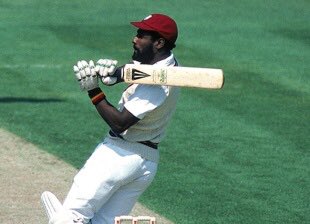
“At Lords, they were in the ascendancy” – Clive Lloyd[7]
For much of the second test at HQ, Lloyd was right; England’s openers put on a solid hundred stand, Fowler and Lamb completed accomplished centuries, England took a first innings lead (albeit a slender one) and Botham scored over a hundred runs and took eight wickets. Indeed, as late as the fifth morning, with the West Indies on 57-1 chasing an unlikely 342, WinViz (had it existed at the time) may well have installed England as favourites.
When teams reconvened at Lord’s on June 21st, changes in the England line up were inevitable. Foster duly replaced left arm spinner Nick Cook, Gatting came in for Randall and Chris Broad (Dad of Stuart) was handed a debut to open in place of Andy Lloyd. For the West Indies, Milton Small was drafted into the side in place of the injured Holding. Clive Lloyd won the toss on an overcast morning and invited England to bat. In a rain interrupted day, Broad and Fowler put on a solid century opening partnership before the former was taken smartly by Dujon off Marshall for 55. England would end the day on 167-2 with Fowler unbeaten on 70. Fowler recalls that in addition to being not out overnight, he was also “nursing sore bollocks”[8] after being struck amidships by Garner. So, in order to get some decent sleep, Fowler recounts that he rang down to room service at 1am and ordered three pints of Guinness. It clearly had the desired effect.
When play resumed on Day 2, Fowler played some wonderful strokes, two hooked fours off Marshall being particularly notable, and duly completed his century; his Lancashire captain one of the first to congratulate him. Although there were contributions from Lamb (23), Botham (30) and Downton (23), England could muster no more than 286; Marshall showing his class taking 6-85. Although in a bit of a mess at 35-3 (all three to Botham), Richards and Lloyd rallied to take West Indies to 119-3 at the close with both looking well set.
The Saturday morning saw Botham charge in tirelessly from the Nursery end and rewarded with the three wickets to fall before lunch, including Richards, adjudged rather dubiously lbw, for 72. Aside from a swift lower order stand from Baptiste and Marshall, there was little other resistance, and the tourists were dismissed before tea for 245; Botham taking 8-103, his best innings figures since taking 8-34 against a Packer depleted Pakistan on the same ground in 1978. By the close England had reached 114-4 including Gatting, out lbw inexplicably shouldering arms for second time in the match to Marshall.
A rain interrupted fourth day featured an excellent century stand between Lamb and Botham; the latter smashing a quick fifty and later bringing up his four thousandth test run with a back foot drive through point off Marshall. After Botham’s dismissal, Lamb would go on to make a classy hundred, his first against the West Indies. Due to the delays earlier in the day, play would continue to 7pm. At 287-7 (328 ahead), the umpires offered the light to Lamb and Pringle. Perhaps thinking that their captain could proffer his counsel, the pair gazed up at the England dressing room balcony. With the lead growing, should the England batsmen apply additional scoreboard pressure? Gower was nowhere to be seen. The pair duly decided to leave the field, unsurprisingly to the consternation of not only the crowd, but also the watching media.
Gower would later write “Had they (the press) known that I was sitting inside watching Wimbledon on the TV, I dread to think what might have been written.” In mitigation, he continued “…when you are playing the West Indies, the new ball is due and it’s dark, I don’t consider that it is really my place to order a senior batsman to stay out there.”[9] England would add a further 13 runs on the final morning before declaring at 300-9. The West Indies would require a seemingly improbable 342 in about 80 overs.
Another familiar face to England fans, Greenidge enjoyed a distinguished career with Hampshire with fellow Bajan Malcolm Marshall. Arriving in England as a young teenager in the 60s, Greenidge’s family settled in Berkshire. Having grown up with cricket in Barbados, he soon made his name as a schoolboy cricketer and made his debut for Hampshire in 1970. According to Wisden in 1977 (the year he was accorded a Cricketer of the Year accolade) “there was natural speculation about whether he would make himself available for England (for whom he was qualified)”[10]. However, he returned to Barbados in 1972 and duly chose to try and break into the West Indies side. Making his debut against India in 1974 he immediately impressed making 371 series runs. After a pummelling at the hands of a rampant Australia in 1975/6, Greenidge established himself as a regular West Indies opener initially with Roy Fredericks and latterly Desmond Haynes with whom he would form a formidable partnership at the top of the order. Thoughtful, yet devastatingly effective, Greenidge could flail bowling attacks all over the world.
Sensing a rare victory over the West Indies was in their grasp, England set attacking fields in their pursuit of ten wickets. Indeed, just before lunch, Haynes was run out by Lamb for 17 with the West Indies total on 57. It would be the only success England would enjoy. That afternoon in NW8, Greenidge was in an uncompromising mood. Together with a contrasting yet no less effectual foil in Gomes, Greenidge would smash 214 not out, driving, cutting and pulling the England bowling to all parts. Greenidge heralded his double century with an audacious six off Foster – his second hundred coming at better than a run a ball. The improbable would become a stroll in the park; the West Indies winning by 9 wickets with more than 11 scheduled overs remaining.
In making the declaration, Gower recalled “…I had not bargained for us bowling total crap…” Crap or not, Greenidge was devastating and was quite rightly (along with Botham for his earlier efforts with both bat and ball) named as joint player of the match. 2-0 down, how could England recover from this?
Haroon Khalid
[1] Woodcock, J., ed. 1985 Wisden Cricketers’ Almanack 1985. John Wisden & Co Ltd London
[2] Gower, D. 1992. Gower The Autobiography. Collins Willow London
[3] Holding, M. 2010 No Holding Back: The Autobiography. Orion. Kindle Edition.
[4] Lister, S. 2015 Fire in Babylon, Yellow Jersey Press, London.
[5] Fowler G. 2016 Absolutely Foxed. Simon & Schuster UK. Kindle Edition.
[6] Gray, A. 2020 The Unforgiven: Missionaries or Mercenaries? The Untold Story of the Rebel West Indian Cricketers Who Toured Apartheid South Africa. Pitch Publishing. Kindle Edition.
[7] Fire in Babylon. 2010. [Film] Stevan Riley. Dir. UK: [Motion Picture] Cowboy Films/Passion Pictures
[8] Fowler, G. ibid
[9] Gower, D. ibid
[10] Preston, N., ed. 1977 Wisden Cricketers’ Almanack 1977. John Wisden & Co Ltd London



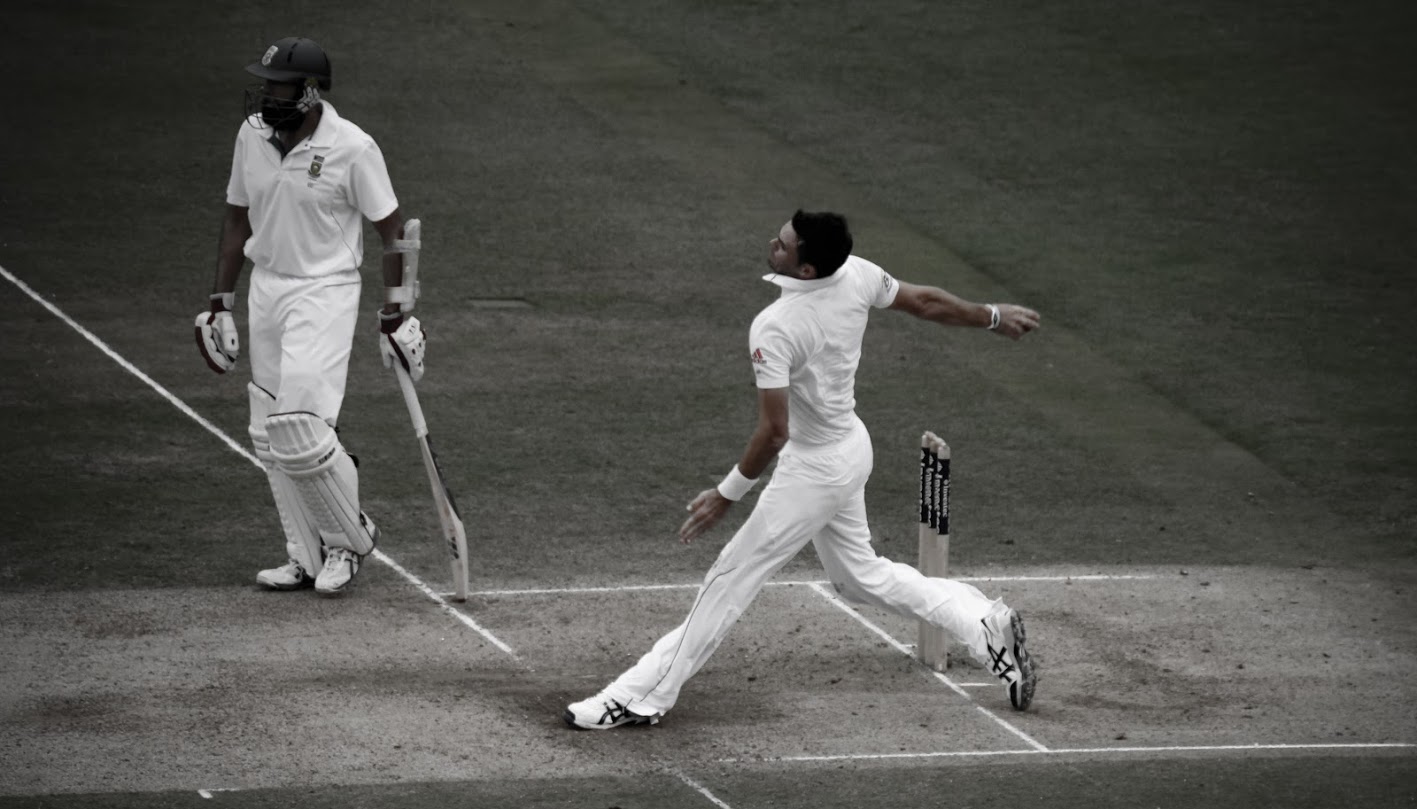
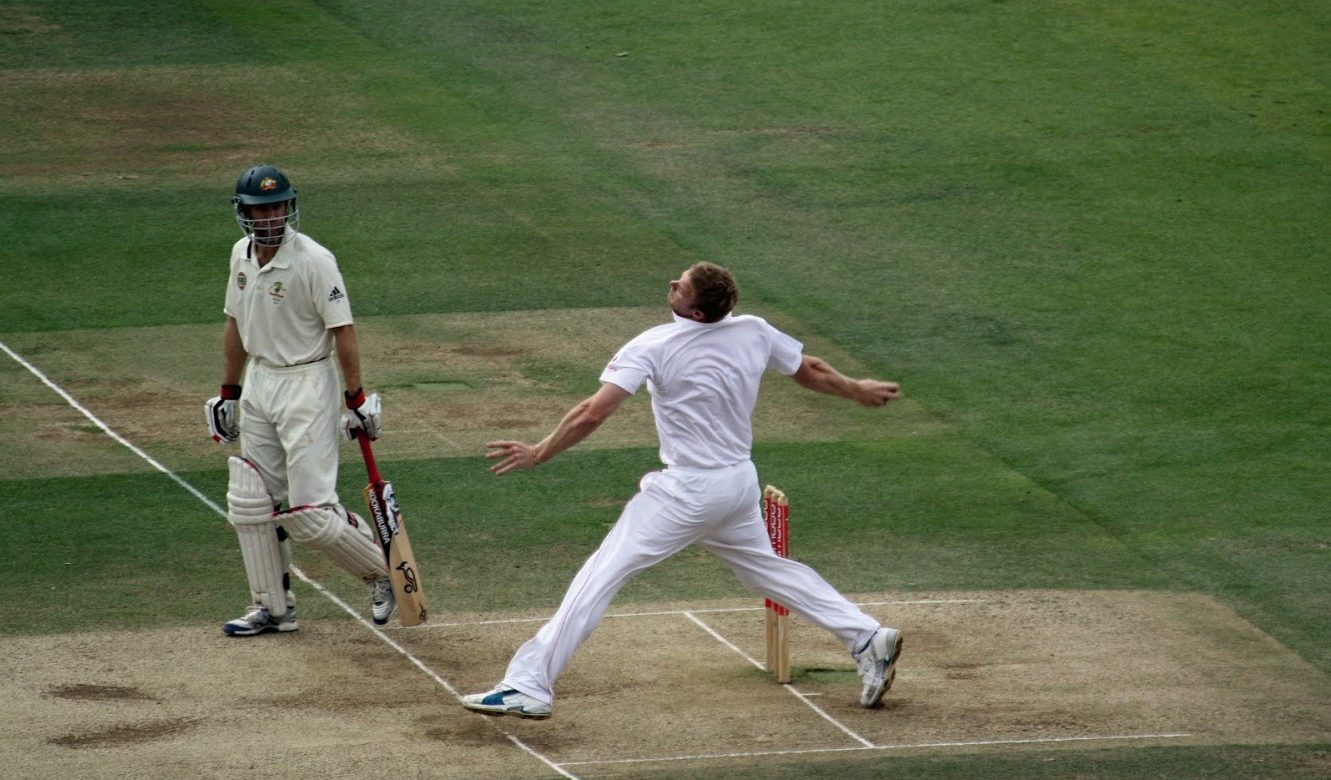
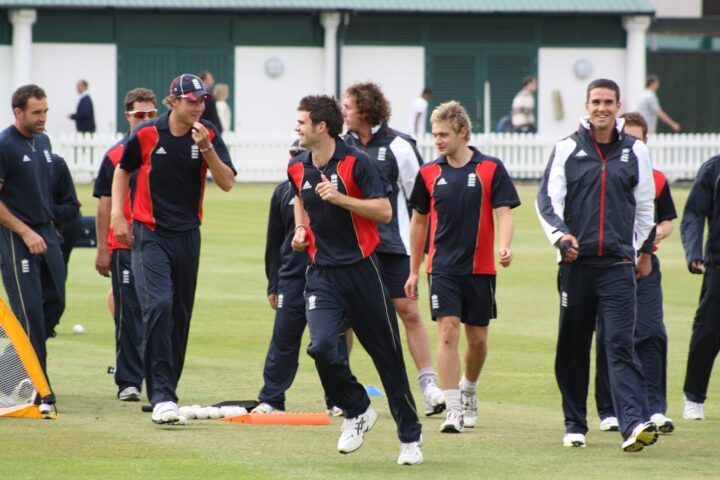
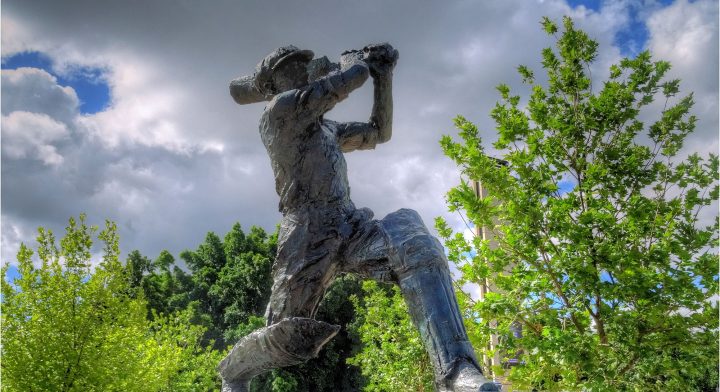


You had to be around at the time to understand how difficult this team was to play against. They defied conditions to leave a succession of flayling bats and bruised hands all over the world. There is no modern equivalent and go on all you like about Smith, but he’s no Richards. Although at times I felt Lloyd lost sight of sportsmanship, letting his barrage of quicks lose on all and sundry, but it wasn’t just about the quicks, in Greendige, Haynes, Richards and Lloyd himself they have a top order to die for.
It was often difficult to appreciate them fully as an England supporter but how the game could use a talent pool like that now.
Yes, you just had to sit back and appreciate the quality of what you were watching! I agree with you about Lloyd, much though I admire him. He could be quite cynical, not least on slowing down the over rate which meant the batting side had even less of a chance if it came to a run chase – which wasn’t often !
Even when he wasn’t slowing the over rate down it was still only round 12 and hour with Holding deserving of a special mention with a 30-40 yard run and amble back to his mark. This gave batsmen plenty of time to ponder how to survive the next delivery, especially as he could generate almost as much pace and hostility off his short run, about Archer’s length, which he only used very occasionally.
I must confess I don’t remember the Windies being subjected to a ‘run chase’. Mostly it seemed to be an achievement to avoid an innings defeat.
Absolutely! and they thrilled the crowds all over the world and even when they were thrashing teams all over the world they were loved.
Marshall and Garner that summer were the greatest opening attack I’ve seen. It’s fantastic that both men’s quality is justly reflected in their final career stats. For a bowler to average under 21 in Tests is incredible. Roberts, Lillee, Holding, Imran, Wasim, Waqar, Willis, Botham, Hadlee, Donald, Pollock – none of them could manage the feat. Marshall could swing and seam it both ways (although he lost his outswinger late in his career) and could bowl at the highest pace if circumstances required. He bowled an incredible 97k deliveries in f/c and List A cricket so not surprisingly throttled back at times. His taking of 30+ wickets on a tour of India must be one of the greatest fast-bowling achievements ever. Oddly, he was less effective in ODIs – his style needed close catchers. Joel Garner seems weirdly underrated these days. For much of his career he was WI’s containment bowler but in this series with Roberts and Croft gone he stepped up to be the cutting edge and showed what he could have been doing all along if team dynamics had permitted. He didn’t swing it much but his lift, accuracy and seam movement were devastating. He was the greatest ODI bowler I’ve seen and also one of the greatest gully fieldsmen ever.
Richards and Greenidge on the other hand are slightly short-changed by their final career records. Richards averaged nearly 60 for much of his career and Greenidge was around 50 for the peak of his. Both played on a couple of years too long, perhaps they thought that what was coming up behind them wasn’t good enough – and if so they were right. They didn’t have to face their own bowlers in Tests but faced them in domestic cricket and made big runs (Richards made 164* off Marshall in a CC match for Somerset for example).
It’s worth putting in a word for the Pakistan team of that era. They held the mighty WI to several drawn series and when they lost a series to them it was only by one Test. I wish there was some film of what must have been an epic five-Test series they played in WI in 1976/77 which they lost 2-1 (ironically by collapsing to spin in the Fifth Test). Few people seem to remember how good cricketers like Majid Khan, Mushtaq Mohammed and Asif Iqbal were at their peaks.
Garner was as close to unplayable in this series as anything I’ve ever seen. His hand used to go above the sightscreen, making his bowling extra hard to pick up (especially his yorker), and he was almost impossible to score off because he got so much bounce off a length. He was also much quicker than he’s often given credit for – I’d guess he was often high 80s in this series. I agree about how underrated he seems to be nowadays. He’s probably in the top 20 pace bowlers of all time for me. Marshall would be top of that list and Holding in the top 10, for anyone under 45 trying to understand just how good this side was! Then chuck in one of the top 3 opening partnerships of all time, one of the best keeper-batsmen ever in Jeff Dujon….and Viv, the best batsman to ever walk the face to the earth. Simply the best team ever, just a notch above the Aussies in the early 2000s.
Glad you mentioned Pakistan. They were the only team that troubled Sir Viv.
Great article. Those were the days when you could watch Test cricket free to air on BBC so I got to see that West Indies team in their pomp.
I also had the privilege of seeing them at the Leinster Cricket Club in Rathmines, Dublin where they scored an awesome 584-6 declared against Ireland with a great knock by Richie Richardson the highlight.